Best MongoDB Relationship Management Guides to Buy in December 2025
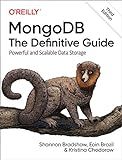
MongoDB: The Definitive Guide: Powerful and Scalable Data Storage


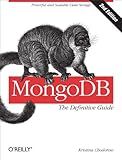
MongoDB: The Definitive Guide: Powerful and Scalable Data Storage


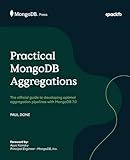
Practical MongoDB Aggregations: The official guide to developing optimal aggregation pipelines with MongoDB 7.0


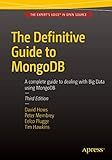
The Definitive Guide to MongoDB: A complete guide to dealing with Big Data using MongoDB


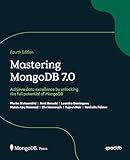
Mastering MongoDB 7.0: Achieve data excellence by unlocking the full potential of MongoDB


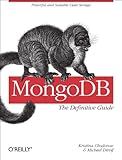
MongoDB: The Definitive Guide


In MongoDB, one way to handle many-to-many relationships is to use a linking collection to create a 'junction collection'. This collection will contain documents that link the two main collections involved in the relationship. Each document in the junction collection will have references to documents in the two main collections, forming a many-to-many relationship between them.
When querying data from a many-to-many relationship in MongoDB, you can use the $lookup aggregation stage to join the main collections with the junction collection and retrieve the related data. This allows you to access the data associated with each document in the many-to-many relationship.
Another approach is to denormalize the data and include arrays of references in each document to represent the many-to-many relationship. This can simplify queries and make it easier to access related data without the need for multiple join operations. However, denormalization can lead to data redundancy and potential consistency issues, so it's important to carefully consider the trade-offs when using this approach.
Overall, handling many-to-many relationships in MongoDB requires careful design and consideration of the specific requirements and trade-offs involved in each approach. By choosing the right modeling strategy and query optimization techniques, you can effectively manage many-to-many relationships in MongoDB and efficiently access related data as needed.
What is a junction table and how is it used in a many to many relationship in MongoDB?
In MongoDB, a junction table is a collection that is used to represent a many-to-many relationship between two other collections. It serves as an intermediary table that links the two collections together.
For example, let's say we have two collections: "Students" and "Courses". A student can be enrolled in multiple courses and a course can have multiple students enrolled in it. To represent this many-to-many relationship, we can create a junction table called "Enrollments". This table will have references to both the "Students" and "Courses" collections, along with any additional information related to the enrollment such as the enrollment date or grade.
When querying data for a many-to-many relationship in MongoDB, we can use aggregation pipelines to join the collections through the junction table. This allows us to retrieve information about the relationship between students and courses, such as which students are enrolled in a specific course or which courses a particular student is enrolled in.
Overall, junction tables provide a flexible and efficient way to handle many-to-many relationships in MongoDB by simplifying the structure of the data model and enabling complex queries to be executed effectively.
How to create a junction table for a many to many relationship in MongoDB?
In MongoDB, you can create a junction table (also known as an associative table or linking table) to represent a many-to-many relationship between two collections. Here's how you can set up a junction table for a many-to-many relationship using MongoDB:
- Create two collections for the entities that have a many-to-many relationship. For example, let's say you have a collection named "students" and another collection named "courses".
- Create a new collection for the junction table, which will store the relationships between students and courses. You can name this collection something like "enrollments".
- In the junction table (enrollments collection), you can store documents that contain references to the IDs of the student and course documents that are related. Each document in the enrollments collection represents a single relationship between a student and a course.
Here is an example schema for the enrollments collection:
{ studentId: ObjectId, courseId: ObjectId }
- Whenever a student enrolls in a course, you can create a new document in the enrollments collection that references the IDs of the student and course documents involved in the relationship.
By setting up a junction table in this way, you can efficiently represent and manage many-to-many relationships in MongoDB while keeping your data well-organized and normalized.
What are some tools for visualizing or debugging many to many relationships in MongoDB?
- MongoDB Compass: MongoDB Compass is a GUI tool provided by MongoDB for visually exploring and interacting with MongoDB databases. It allows users to visually create and edit queries, view and interact with data, and analyze database performance.
- NoSQLBooster for MongoDB: NoSQLBooster for MongoDB is a professional MongoDB GUI tool that provides advanced query and data visualization capabilities. It allows users to visually create and edit queries, view and analyze data, and debug queries efficiently.
- Robo 3T: Robo 3T is a lightweight GUI tool for MongoDB that provides a user-friendly interface for querying, analyzing, and visualizing MongoDB data. It allows users to easily navigate through collections, view documents, and debug queries.
- MongoDB Shell: MongoDB Shell is the official command-line tool provided by MongoDB for interacting with MongoDB databases. It allows users to run queries, view data, and debug database operations directly from the command line.
- MongoDB Aggregation Framework: The MongoDB Aggregation Framework provides a powerful framework for analyzing and manipulating data in MongoDB. Users can use aggregation pipelines to perform complex operations, including joining and filtering data from multiple collections, to visualize and debug many-to-many relationships in MongoDB.
What is the impact of denormalization on many to many relationships in MongoDB?
Denormalization in many-to-many relationships in MongoDB can have both positive and negative impacts.
Positive impacts:
- Improved query performance: Denormalization can reduce the number of queries needed to access related data, thus improving query performance.
- Simplified data retrieval: Denormalization can simplify data retrieval and make it easier to access related data in a single query.
- Reduced data duplication: By denormalizing many-to-many relationships, redundant data can be avoided, leading to a more efficient data storage and retrieval process.
Negative impacts:
- Data redundancy: Denormalization can lead to data redundancy and increased storage space usage.
- Data consistency: Denormalization can make it more challenging to maintain data consistency, as updates to one instance of data may not be reflected across all denormalized copies.
- Increased complexity: Denormalization can increase the complexity of the data model and make it harder to maintain and scale the database over time.
Overall, the impact of denormalization on many-to-many relationships in MongoDB will depend on specific use cases and requirements. It is important to carefully consider the trade-offs and choose the right denormalization strategy to balance performance and data consistency.
What role does indexing play in optimizing queries for many to many relationships in MongoDB?
In MongoDB, indexing plays a crucial role in optimizing queries for many-to-many relationships by improving the performance of query execution.
When dealing with many-to-many relationships, queries often involve joining multiple collections to retrieve related data. By creating indexes on the fields that are frequently queried or used in joins, MongoDB can quickly locate the relevant documents in the collections, reducing the need for full collection scans. This, in turn, leads to faster query execution times and improved overall performance.
Indexes are particularly beneficial for queries that involve filtering, sorting, or grouping on fields that are part of the many-to-many relationship. By indexing these fields, MongoDB can efficiently locate and retrieve the required data without having to scan through all documents in the collections.
Overall, indexing plays a critical role in optimizing queries for many-to-many relationships in MongoDB by facilitating faster and more efficient query execution, ultimately improving the overall performance of the database system.
What tools or libraries are available to simplify working with many to many relationships in MongoDB?
There are several tools and libraries available to simplify working with many-to-many relationships in MongoDB. Some popular options include:
- Mongoose: Mongoose is a popular Node.js library that provides a schema-based solution for modeling application data and simplifies working with MongoDB. It provides support for defining relationships between different entities, including many-to-many relationships.
- MongoDB Compass: MongoDB Compass is an official graphical user interface (GUI) tool for working with MongoDB databases. It provides a visual representation of your data model and allows you to create and manage relationships between entities easily.
- Aggregation Framework: MongoDB's Aggregation Framework allows you to perform complex queries and data transformations on your data. It includes operators and stages that can help you manage many-to-many relationships efficiently.
- Join Monster: Join Monster is a library that allows you to efficiently load data from multiple MongoDB collections in a single query. It helps reduce the number of round trips to the database, which can be useful when working with many-to-many relationships.
- GraphQL: GraphQL is a query language for APIs that allows you to request only the data you need, including data from objects with many-to-many relationships. There are various GraphQL libraries available that can help you work with MongoDB, such as Apollo Server.
Overall, these tools and libraries can help simplify working with many-to-many relationships in MongoDB and make it easier to manage complex data models.
